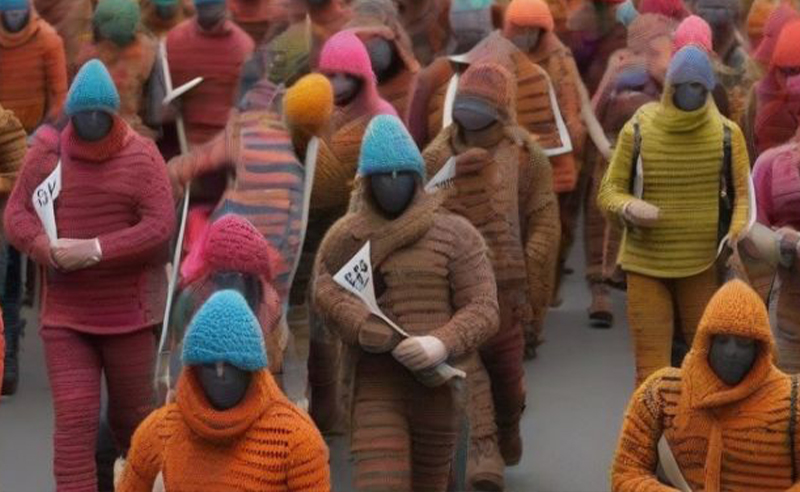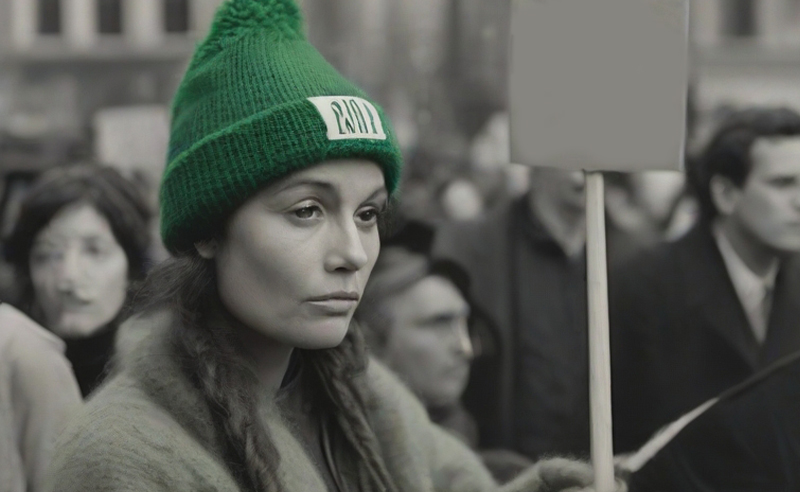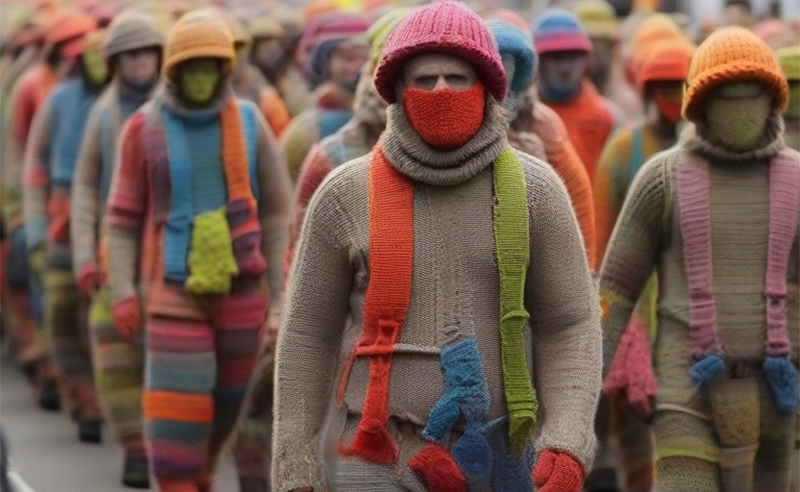Unfair wages for workers in the fashion industry in Bangladesh: Who is responsible?

Unfair wages have driven textile workers in Bangladesh to the streets, where they are advocating for just compensation.
Regrettably, their peaceful movement is being met with force, leading to loss of lives and legal challenges for thousands.
The salaries in the fashion industry, already modest, have become impractical due to inflation, eroding the progress made through previous union efforts.
Workers continuously face the challenge of renegotiating their rights.
Achieving even a slight pay increase involves years of rigorous negotiations, but inflation has the power to diminish it overnight.
This issue is not exclusive to Bangladesh; it’s a widespread global concern.
Read More Here
Unfair Wages: Garment Workers in Bangladesh Demand a Just Minimum Wage Increase to 23,000 TK
Currently, the minimum wage for garment workers in Bangladesh is set at 8,000 TK.
Trade unions are pushing for a minimum of 23,000 TK.
Externally, this might seem like an unusually substantial increase. However, it mirrors the genuine need of workers for a fair and livable wage, ensuring their well-being and dignity.

One Voice-One strike
Bangladesh’s 3,500 garment factories make up approximately 85 percent of the country’s $55 billion annual exports. Catering to renowned fashion brands such as Levi’s, Zara, and H&M.
However, the working conditions remain grim for many of the industry’s four million workers, predominantly women whose monthly earnings commence at 8,300 taka ($75).
Read about fair trade here
Police reported that about 600 businesses that closed during the week had reopened in the areas most affected by the strike, which resulted in some factories being looted and set on fire.
Nevertheless, clashes erupted in the industrial town of Ashulia, west of the capital Dhaka, when approximately 10,000 workers tried to prevent their colleagues from returning to their shifts.
“Unveiling the Harsh Reality: Unfair Wages in Bangladesh Push Workers to the Brink of Modern Slavery”
To understand the gravity of this situation, let’s delve into what constitutes a fair and dignified wage.
The Living Wage, calculated through the Anker methodology, is a globally recognized benchmark for determining a reasonable income
This wage is calculated locally, considering the expenses of fundamental needs such as food, housing, transportation, and healthcare.
Earning a living wage is not a luxury. It merely covers the essentials, ensuring families don’t have to make choices between necessities.
Like providing meals for their loved ones, educating their children, using public transportation, or affording necessary medications.
Depending on the organization conducting the calculation, the current living wage in Bangladesh varies from 33,368 TK (Bangladesh Institute for Labour Studies) to 51,000 TK (Asia Floor Wage Alliance).
Even with the most conservative estimate, the conclusion is staggering: workers are presently earning only a quarter of a living wage! Just imagine the challenging decisions they must confront every day.
Describing this as anything other than a form of modern slavery is difficult. While some argue that these workers aren’t coerced into these factories, the reality is that they have limited viable options.

Who bears responsibility?
The answer is indeed far from simple.
What about the factory owners?
They would likely argue that they are adhering to the law and that raising wages risks losing competitiveness, customers, and jeopardizing jobs for workers.
And the Bangladeshi government?
They might contend that increasing the minimum wage would make the country less attractive to international brands. Prompting them to seek cheaper alternatives elsewhere and putting millions of jobs in Bangladesh at risk.
And the fashion brands?
Some now claim they’d be willing to “pay higher prices for clothes made in Bangladesh to help compensate for wage increases.”
However, this statement seems hypocritical. If brands truly desire to manufacture in a country with better-paid workers, why did they choose Bangladesh initially?
Low wages and abundant labor are Bangladesh’s main competitive advantages. Despite evidence of worker exploitation and tragic incidents like the Rana Plaza collapse, they could have opted for more humane conditions.
Why didn’t they? They might argue leaving Bangladesh would worsen the situation for workers who would lose their jobs.
They might also contend that without producing at such low costs and offering affordable products, they wouldn’t remain competitive, consumers wouldn’t buy, and they’d go bankrupt.
And what about consumers?
They might express their financial struggles, the constant need for new shoes and clothes for their growing children. Their inability to pay more, and their lack of time to scrutinize where clothes were made.
Especially when everything seems to be produced in Asia in similarly challenging conditions.
And the governments of importing countries?
They might argue that raising import barriers on Bangladeshi products would result in job losses.
Be unpopular with their electorate facing higher clothing prices.
And also that they are under significant pressure from the industry to prioritize their business interests (though they might not explicitly admit it).
Who else could share the blame?
The system itself?
Undoubtedly, it’s a systemic issue.
While it may not be clear who is at fault, it is evident who bears the consequences – hardworking individuals struggling each day, unable even to adequately provide for their families.
The ongoing strike might lead to a modest minimum wage increase. Today, the Bangladeshi government proposed raising it to 12,500 TK. Still, it’s a considerable distance from a living wage!
Certainly, we need to consider the well-being of future generations and care for the environment.
Yet, what sense does that make if we can’t ensure the proper care of the current generation?

WHAT YOU NEED TO KNOW
The “Fairtrade” initiative and the “Fairtrade Textile Standard” program aim to ensure fair working conditions in the global fashion industry.
These programs focus on protecting the rights of workers in the textile and clothing industry, including safeguarding them from harmful chemicals and improving working conditions.
Asian countries are the main manufacturing hubs for textile products, where millions of people work, many of whom live below the poverty line and face health and safety issues in the workplace. The “Fairtrade Textile Standard” program seeks to ensure lawful wages for workers and encourages unionization.
Furthermore, the program promotes transparency in businesses by involving workers in audit committees and ensuring their democratic representation within the company.
Lastly, the program addresses other issues such as worker safety, avoiding harmful chemicals, and protecting workers’ rights concerning overtime.
The “Fairtrade” initiative offers consumers guidelines for choosing sustainable and ethical fashion, encouraging them to select certified products that comply with workers’ rights and environmental protection.
Read more here
By choosing a fair trade product, you are selecting a product that has been produced in a way that respects human rights and is more environmentally friendly.
You may also like
Fair Trade: How Fashion Transforms into a Movement for Change
Let's start by exploring fair trade, also referred to as "ethical trade." This movement involves the


